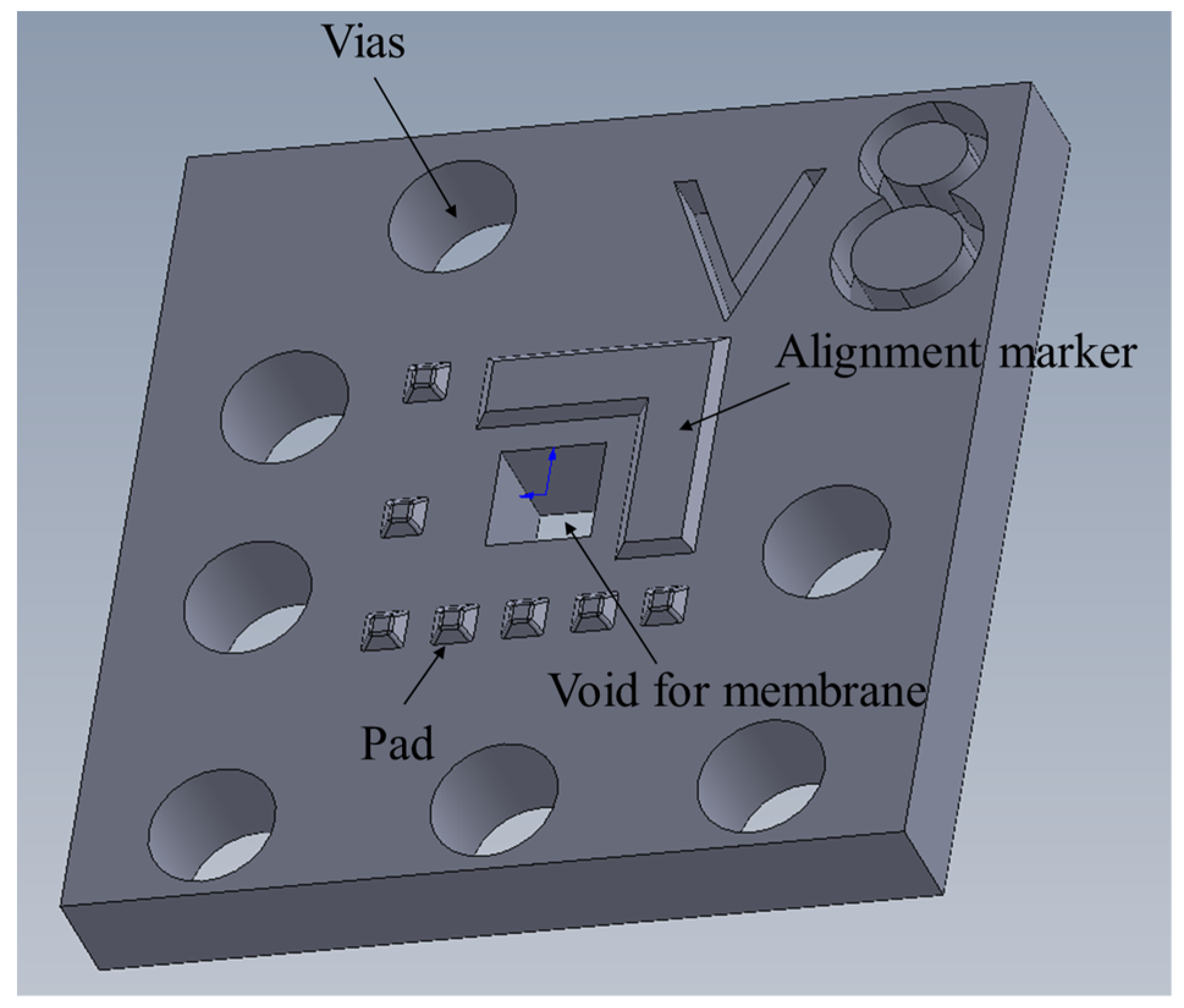3DInkPack—Inkjet Printing of Discrete Sensor Packages for Advanced Rapid Prototyping †
Abstract
:1. Introduction
2. Materials and Methods
2.1. Polymer 3D Printing, Ag Dispensing and Inkjet Ag-Nanoparticle Printing
2.2. Photonic Sintering
2.3. Flip-Chip Fine Placing
3. Results and Discussion
3.1. 3D Microfabrication
3.2. Chip-to-Package Contact
Acknowledgments
Conflicts of Interest
References
- Vaezi, M.; Seitz, H.; Yang, S. A review on 3D micro-additive manufacturing technologies. Int. J. Adv. Manuf. Technol. 2013, 67, 1721–1754. [Google Scholar] [CrossRef]
- Kim, D.; Lee, S.H.; Jeong, S.; Moon, J. All-Ink-Jet printed flexible organic thin-film transistors on plastic substrates. Electrochem. Solid St. 2009, 12, H195–H197. [Google Scholar] [CrossRef]
- Cook, B.S.; Mariotti, C.; Cooper, J.R.; Revier, D.; Tehrani, B.K.; Aluigi, L.; Roselli, L.; Tentzeris, M.M. Inkjet-printed, vertically-integrated, high-performance inductors and transformers on flexible LCP substrate. IEEE MTT-S Int. Microw. Symp. 2014, 1–4. [Google Scholar] [CrossRef]
- Cook, B.S.; Cooper, J.R.; Tentzeris, M.M. Multi-Layer RF capacitors on flexible substrates utilizing inkjet-printed dielectric polymers. IEEE Microw. Compon. Lett. 2013, 23, 1531–1309. [Google Scholar] [CrossRef]
- Korvnik, J.G.; Smith, P.J.; Shin, D.-Y. Overview of Inkjet-Based Micromanufacturing. In Inkjet-Based Micromanufacturing; Wiley-VCH Verlag GmbH & Co. KGaA: Weinheim, Germany, 2012. [Google Scholar]
- Szendiuch, I. Development in Electronic Packaging—Moving to 3D System Configuration. Radioengineering 2011, 20, 214–220. [Google Scholar]
- Krivec, M.; Roshanghias, A.; Abram, A.; Binder, A. Exploiting the combination of 3D polymer printing and inkjet Ag-nanoparticle printing for advanced packaging. Microelectron. Eng. 2017, 176, 1–5. [Google Scholar] [CrossRef]


Publisher’s Note: MDPI stays neutral with regard to jurisdictional claims in published maps and institutional affiliations. |
© 2017 by the authors. Licensee MDPI, Basel, Switzerland. This article is an open access article distributed under the terms and conditions of the Creative Commons Attribution (CC BY) license (https://creativecommons.org/licenses/by/4.0/).
Share and Cite
Krivec, M.; Roshanghias, A.; Binder, A. 3DInkPack—Inkjet Printing of Discrete Sensor Packages for Advanced Rapid Prototyping. Proceedings 2017, 1, 609. https://doi.org/10.3390/proceedings1040609
Krivec M, Roshanghias A, Binder A. 3DInkPack—Inkjet Printing of Discrete Sensor Packages for Advanced Rapid Prototyping. Proceedings. 2017; 1(4):609. https://doi.org/10.3390/proceedings1040609
Chicago/Turabian StyleKrivec, Matic, Ali Roshanghias, and Alfred Binder. 2017. "3DInkPack—Inkjet Printing of Discrete Sensor Packages for Advanced Rapid Prototyping" Proceedings 1, no. 4: 609. https://doi.org/10.3390/proceedings1040609
APA StyleKrivec, M., Roshanghias, A., & Binder, A. (2017). 3DInkPack—Inkjet Printing of Discrete Sensor Packages for Advanced Rapid Prototyping. Proceedings, 1(4), 609. https://doi.org/10.3390/proceedings1040609





